Summary / TL;DR
The fundamentals of logo design cover key principles that help create a memorable and effective brand identity. These include originality, simplicity, versatility, brand relevance, and timelessness, as demonstrated by logos like Coca-Cola, Nike and McDonald’s. A strong logo should communicate a business’s values clearly, remain recognisable across mediums, and serve its branding long-term. Designers are advised to avoid trends, ensure readability, and understand the brand's target audience. Techniques such as sketching in black and white, researching competitors, and playing with wordmarks or mascots support the creative process. Logo types include brand marks, emblems, combination logos, and abstracts, each suited to different brand strategies.
A logo is essentially the face of your business; it’s how people see and remember you, so it should be distinctive for all the right reasons. Creating a versatile and memorable logo helps a company stand out from the crowd, but it’s not always easy! In this post, we’ll explore the essentials every designer should consider when crafting a brand’s logo.
Designing logos is exciting and one of the most effective ways to help a brand grow; here, we will cover how to develop your logo and a brand strategy to accommodate, ensuring all rights are reserved.
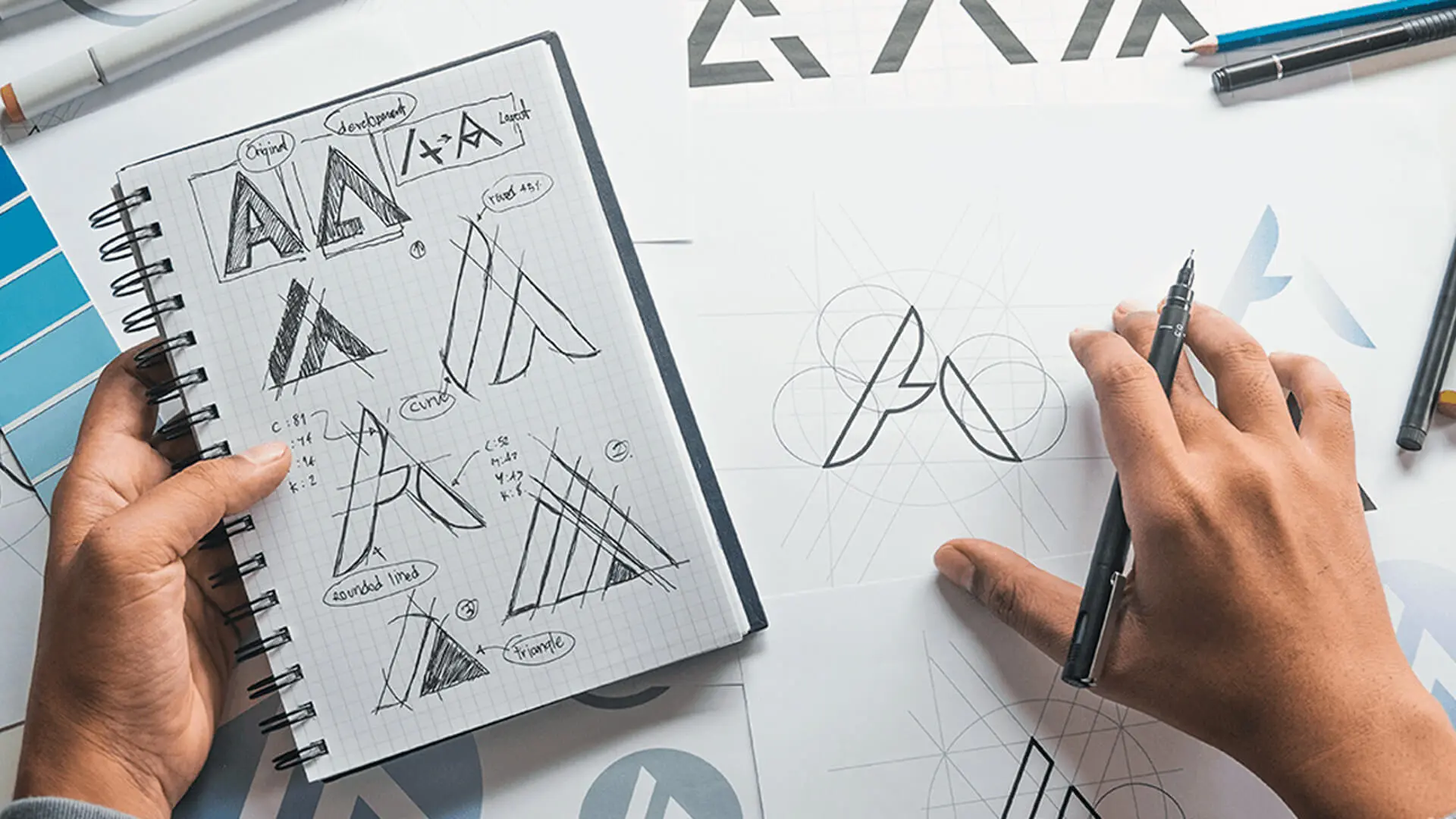
Creating an eye-catching logo is far more effective than traditional door-to-door promotion. It’s often the first thing people notice about your brand, and it should function well across various platforms, similar to a versatile business card, making it an accessible way to engage with the wider audience.
The most effective logos are timeless, beautifully conveying the business’s values through shapes, symbols, and words. However, crafting such logos isn’t simple; it requires significant effort and creativity to build something truly memorable.
Today, we’ll discuss the intricacies and fundamentals of logo design so that your organisation can stand apart from its competitors. Without further ado, let’s begin with the fundamentals of logo design.
5 Principles Of Logo Design
There are several ways to design an effective logo, but we have narrowed down five principles for your benefit. You can note these points to design a logo that will mark the audience.
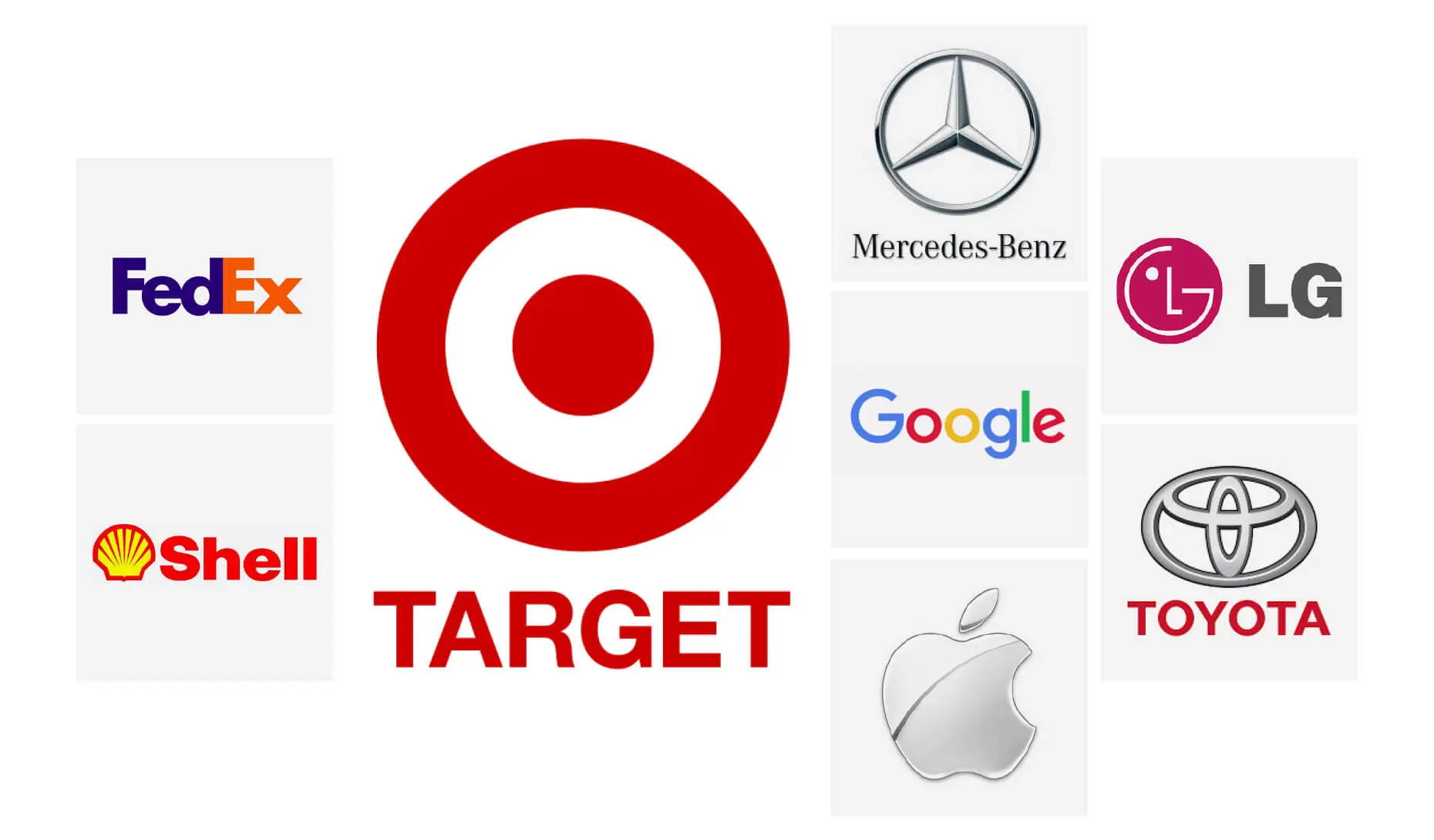
1. Being Original
To design memorable logos, it’s important to be original. You can take inspiration from a good logo, but it’s essential to stand out to create a brand identity and brand personality.
The graphic designer must consider the brand’s style to use symbols and images that are recognisable and timeless. This will promote brand recognition, whereby customers can identify with the website and business by simply looking at the logo.
It’s beneficial to ensure your company logos aren’t too similar to others, as this can lead to confusion. Strive to be original, while observing what sets the leading brands apart.
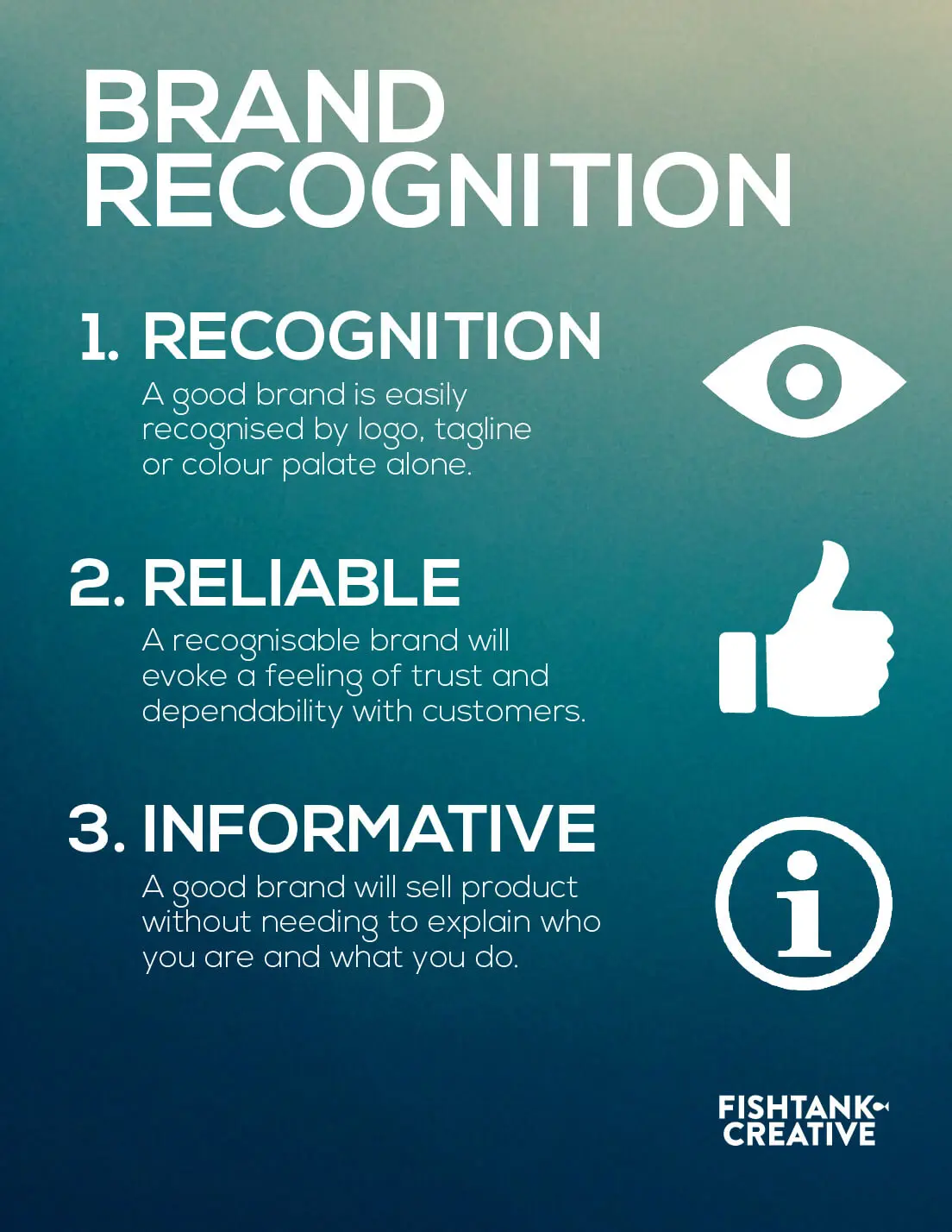
2. Simplicity
As a graphic designer, you might go overboard while designing a unique logo. Working with different logo ideas and essential elements may inspire you to be creative, but it’s essential not to lose sight of the big picture: communication.
The logo must give an immediate and clear sense of the message of the brand. For example, the simplicity of the Coca-Cola logo has made it one of the most popular brands worldwide. The company name is in the design, creating an identity that allows the audience to relate to its services.

Similarly, Adidas has a great logo. Even if it doesn’t have a designated area for the brand name, the visual of the three stripes immediately makes the business recognisable.
So, focus on simplicity and create fonts that effectively represent the organisation.
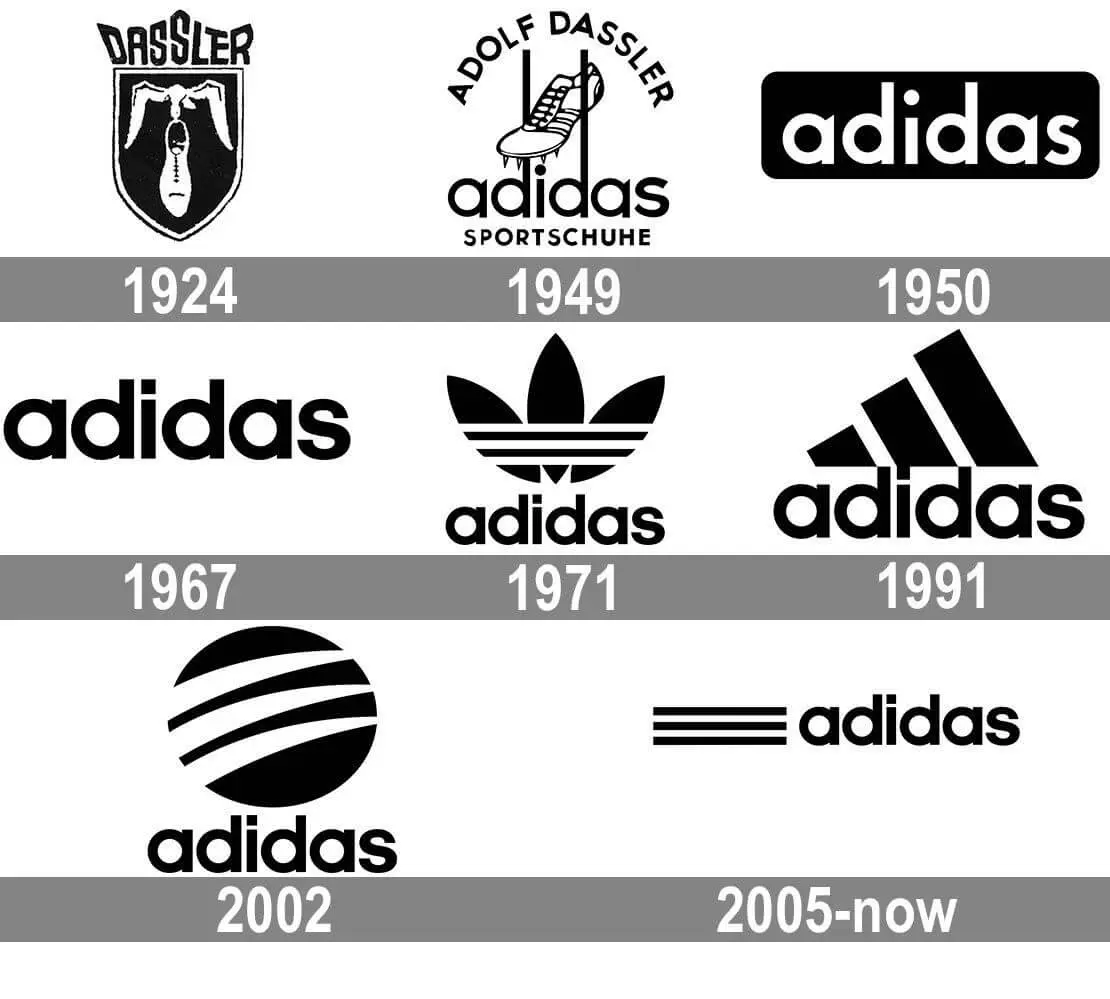
3. Versatility
In addition to being meaningful, a great logo design must be versatile. Be it on shirts, mugs, marketing materials or business cards, the logo must look good everywhere to spread the company’s message.
You’ll need to design an eye-catching logo that works well in both black and white and colour. If it’s visually memorable, the design principles are spot on, and you can add colour to the font.
Moreover, changing the size and colour of the logo, like the golden arches of McDonald’s, shouldn’t impact the brand’s idea. A responsive logo must satisfy the client and benefit the business.
4. Brand Appropriate
The basic principle of graphic design states that the logo should be appropriate. For example, car logos like Mercedes and Audi should be modern, incorporating logo style elements and excellence synonymous with their vehicles and services.
On the other hand, logos for baby products need to be colourful with symbols of playfulness to communicate images of a happy baby. Hence, it’s essential to develop an appropriate logo that meets all your logo needs, depending on the business and the company’s values.
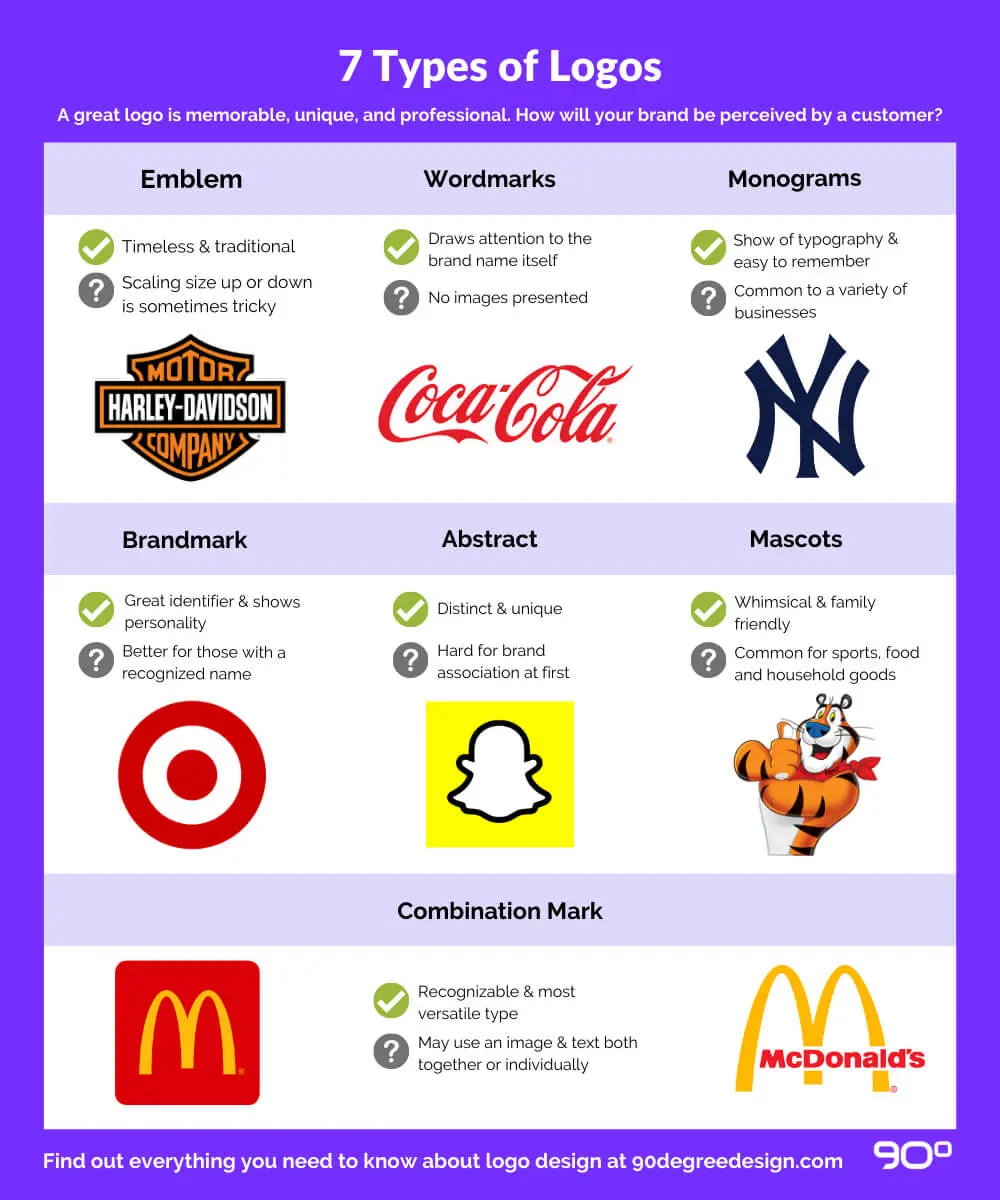
5. Timeless
Another critical aspect of designing a successful logo is to create an element of timelessness. A memorable logo design should be etched in the customers’ minds, ensuring they know it.
The design process must account for the longevity of a business, meaning the logo has to look good even several years later. This will promote a visual message every time a consumer views the design. So, it would be best to opt for a classic idea to make the company stand out.
You need to focus on brand identity and the designing process. A company can change substantially after a couple of years, but the logo must project the principles and policies of the business without any difficulty.
If your own logo can project organisational values, it will become a symbol of its identity, making it timeless.
Want to receive updates? Sign up to our newsletter
Each time a new blog is posted, you’ll receive a notification, it’s really that simple.
Rules Of Logo Design
Let’s now proceed to the rules of logo design, explaining how best to use the resources at your disposal to satisfy the logo requirements of the client.
1. Brand Identity
The logo must hold value both for designers and the company. It’s the first thing customers notice about the brand, leaving a lasting impression on their minds.
It would help if you thought about the logo’s purpose and helped attract the target audience. As a rule, the design process should communicate the company’s message to the customers. This will determine whether they take an interest in the services and functioning of the business.
2. Seeking Inspiration
It would be best to have the inspiration to create a logo because it’s impossible to wake up one morning and start designing. So, we suggest brainstorming with the graphic design team and writing all thoughts on a board or notepad.
This is the part of the design process where you can have fun, as there are no good or bad ideas. You can even draw inspiration from related articles. By asking everyone to come up with suggestions, the little grey cells in the brain start working overtime to design a new logo.
Once all ideas are in, you can verbally spell them out, which might spark an idea. You may also get creative and start thinking about customers, their needs, and expectations. Try understanding why people might invest in the business and how the logo aligns with their principles.
Also, don’t hesitate to push the boundaries of logo design, encouraging everyone to share their thoughts. Even ideas that initially seem flawed can contain the seeds of a perfect logo.
3. Take Notice Of Rival Brands
People get so caught up in establishing their brand’s identity that they disregard rival businesses. However, looking at what another company has done well may work in your favour.
This is especially necessary if two businesses have the same target audience. So, you can consider what creative elements a rival uses to attract customers.
What’s more, it’s essential to be aware of the visual trends in the market so that the logo stands out. For example, if a rival organisation has a modern logo, it would help to opt for a classic design. Also, experiment with colours, shapes, and fonts, thinking about how the brand portrays itself.
The brand designer must be aware of taking inspiration and copying someone else’s idea. The latter is stealing and a strict no.
4. Unique Style
Top designers cultivate a distinctive logo style to forge something unique, deftly applying design principles to meet the brand’s goals. It’s vital to consider various elements individually to effectively craft a new logo.
Be it fonts like serif or sans serif, colours, shapes, or appeal, work on the specific elements separately rather than as a whole. This will make the designing process more manageable. For example, a logo for a law firm will have a classic style with solid colours, while a soda company like Coca-Cola will have a vibrant design.
5. Letters Or Mascots?
You can use letters and mascots to design a logo, provided it’s not overdone. For example, having a lion crest conveys a sense of pride and power, but it won’t work for a vegetable company. Hence, talk to the client to understand the visual aids.
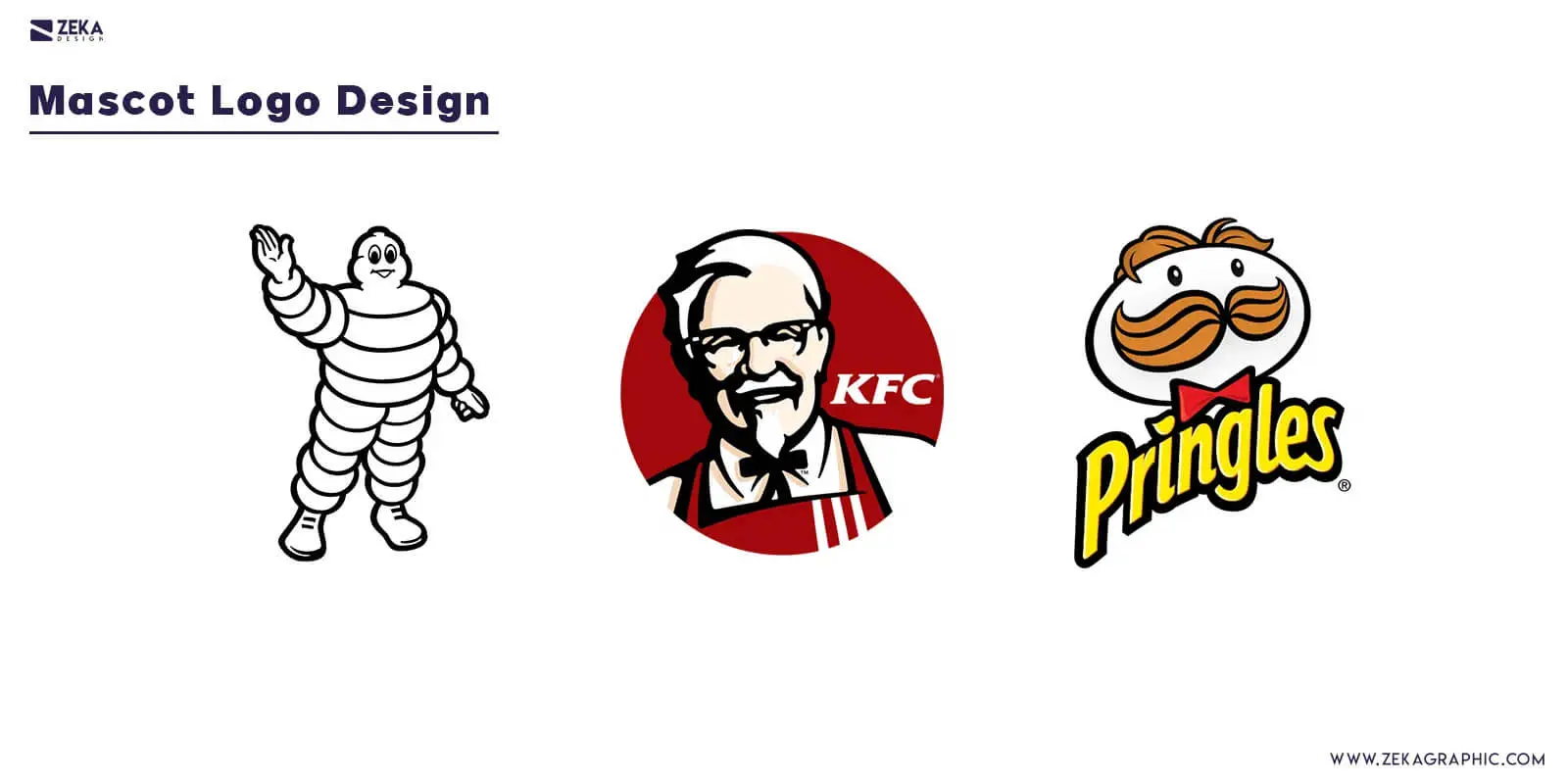
Similarly, handcrafted logos lend a personal touch, creating a bond with customers. Knowledge about the enterprise and its services can provide valuable tips for the designer. It would help keep things simple, as the logo must communicate the brand’s meaning, which is its priority.
Golden Tips For Designing A Logo
Taking the discussion forward from the rules of logo design, let’s now look at the golden tips for producing good logos.
1. Laying A Foundation
Logo designing is much like constructing a building; you need a blueprint to plan a course of action. Instead of worrying about how the finished project will look, proceeding step-by-step is important. So, the first step is laying the foundation, ensuring that the building stands the test of time.
Similarly, in logo design, you need a base for the designing process, keeping in mind that every business is unique. So, using the same strategy for different brands is not feasible.
It would be best to ask the client about their demands and convey them to the graphic designers to get everyone involved. This creates a foundation for developing an effective logo that promotes brand identity design.
2. Start Sketching
The best way to get something done is to start; the same holds in logo design. Encourage your graphic design team to draw whatever idea pops into their head. You can take the best bits of different sketches to create an effective logo.
Using digital tools or drawing on a notepad, the designers should play with shapes and ideas to communicate the brand’s value. You can present these ideas to the client, showing how much work has progressed while welcoming logo design tips about the project.
If the company recommends changes, you can tweak the design accordingly, saving time and effort.
3. Staying Relevant
The primary aim of the logo is to create a visual impression in the minds of people. Hence, it’s essential to focus on more refined logo design elements like typography, fonts, symbols, etc. These are also part of the design principles that help align the logo with the brand identity design.
For example, Amazon has the company’s name written on a white background, but the addition of the arrow makes the difference. It points from the letter ‘a’ to ‘z,’ highlighting its business model. In other words, it’s a creative way of telling customers they can find everything on the website.
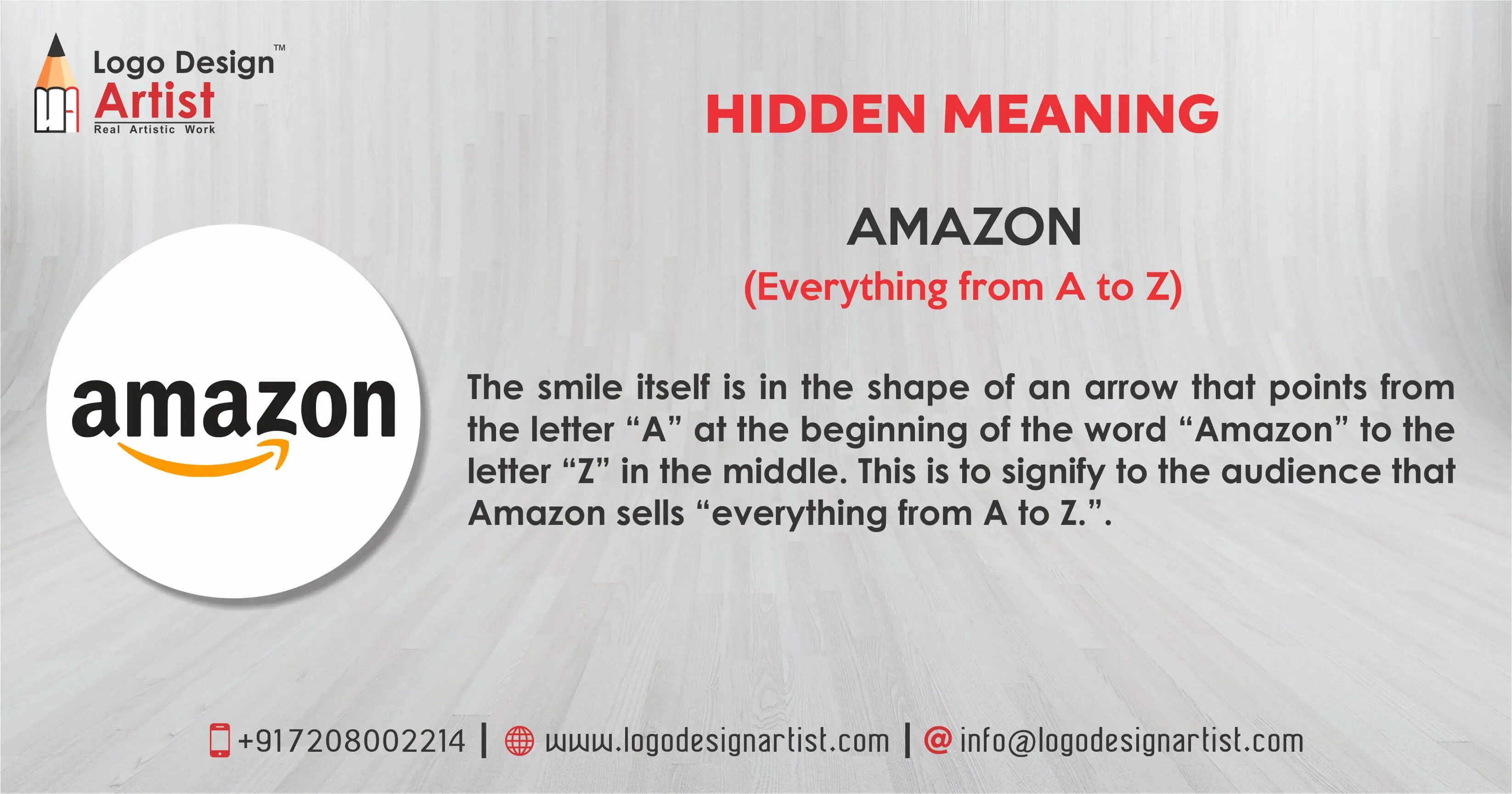
Even if the business changes with time, the Amazon logo will stay relevant, thanks to its simple and modern design. The consumer doesn’t have the time to ponder over the meaning of the logo, so it must be crisp and relevant.
4. Five-Second Rule
Another critical factor in the logo design fundamentals is using the five-second rule to judge the logo’s effectiveness. Any symbol, font, shape, etc., must be easily recognisable to people, ensuring that they understand the design and recognise the brand within five seconds.
All visual elements must convey what the organisation stands for, encouraging consumers to explore the services and business opportunities.
5. Don’t Colour Until The Very End
Initially, it would help sketch a black-and-white logo, focusing on the basic design principles. Adding colours won’t hamper the brand identity if the logo leaves a mark on the consumer’s barest form.
That said, the purpose of colours should be to give the logo a refined look. You won’t need many resources; simple shades will help create a visually striking design that customers can relate to. Usually, a maximum of two colours is enough to design a logo, ensuring it’s attractive without appearing overdone.
Characteristics of Creating A Logo
We’ve discussed the rules and principles of logo design, but specific characteristics will help you design better. Read on to find out.
1. Avoid Trends
It would be best to avoid the latest trends in logo design. We’ve discussed simplicity and being original, so designers mustn’t do what everyone else is doing. You must focus on something fresh and stay relevant for several years to stand out.
In other words, consider the long-term objective rather than a short-term goal, making the logo designing process memorable for yourself and the client. This is how a designer can leave their mark on customers.
2. Should Be Readable
Ensuring that the logo is readable is an essential principle of logo design. Graphic designers need to discuss with the client all possible products where the logo is likely to appear, be it on shoes, mugs, or a website.
Irrespective of the place, the logo must be clear and easily understandable. So, it would be best to use a serif or sans serif font, meaning that changing the size won’t obscure the company name or tagline. As with other logo design elements, simplicity is the key even here.
3. Can The Logo Communicate?
Imagine writing a long description about a brand, explaining its business model and available resources. But hardly anyone will have time to appreciate the brand value by reading a long, tedious write-up.
A logo is the opposite, helping people identify with the brand through its trademark symbol and design. For instance, if you see a black swoosh on a t-shirt or shoe, it immediately reminds you of Nike.
The simple design has left a mark on customers, meaning people relate at once to Nike’s products.
4. Animation
If the logo appears on television, it might be an animation. Understandably, there will be a lot of colours and moving visuals to grab the audience’s attention.
The logo design team must discuss what changes to incorporate with the client, ensuring it doesn’t lose meaning even on a visual medium. This is important, considering that more brands are pushing for state-of-the-art technology to unveil a new product.
Also, television helps spread the brand identity to a large population, so you must adjust to the changing demands of logo design principles.
How To Design A Logo
Although we’ve spoken about logo designing principles, discussing how a graphic designer can sketch compelling logos is essential. So, let’s get started.
1. Background Research
Proper research into the organisation, the client’s requirements, and the business model will help produce eye-catching logo designs. You can welcome suggestions regarding what fonts to use or which symbols to avoid, creating a blueprint in your mind.
Note down everything the company tells you, making it easy to join the dots later. We assure you that having a physical copy of the design principle is better than guesswork. Hence, gather all the necessary information and share it with the designer.
2. Look Beyond A Specific Industry
Please don’t limit yourself to examining the logos of rival companies; it would be best to explore outside the industry.
You never know where the next source of inspiration might come from. Many websites have top-notch logos that might align with the client’s objective, or you might stumble upon a stunning design while walking down the street.
We’ve also spoken about avoiding trends, but don’t forget to explore an obvious idea as it’s still relevant. You can refine this thought later to develop a brand-new logo.
3. Play With Words
It will help play with words if you want to add the brand’s name to the logo. For a car business, the words “vehicle”, “motor,” and “engine” communicate the brand’s meaning and what it stands for. This allows a designer to innovate while aligning with the organisation’s principles.
4. Fine-Tuning
Sketching logos is just the beginning, as it’s important to fine-tune the design. Incorporate all available inputs from the client to ensure that the logo has a memorable visual impact on consumers.
Moreover, considering what colours to use as shade defines how people perceive the logo. For example, green is usually associated with eco-friendly or vegetarian products, while red is fiery and aggressive.
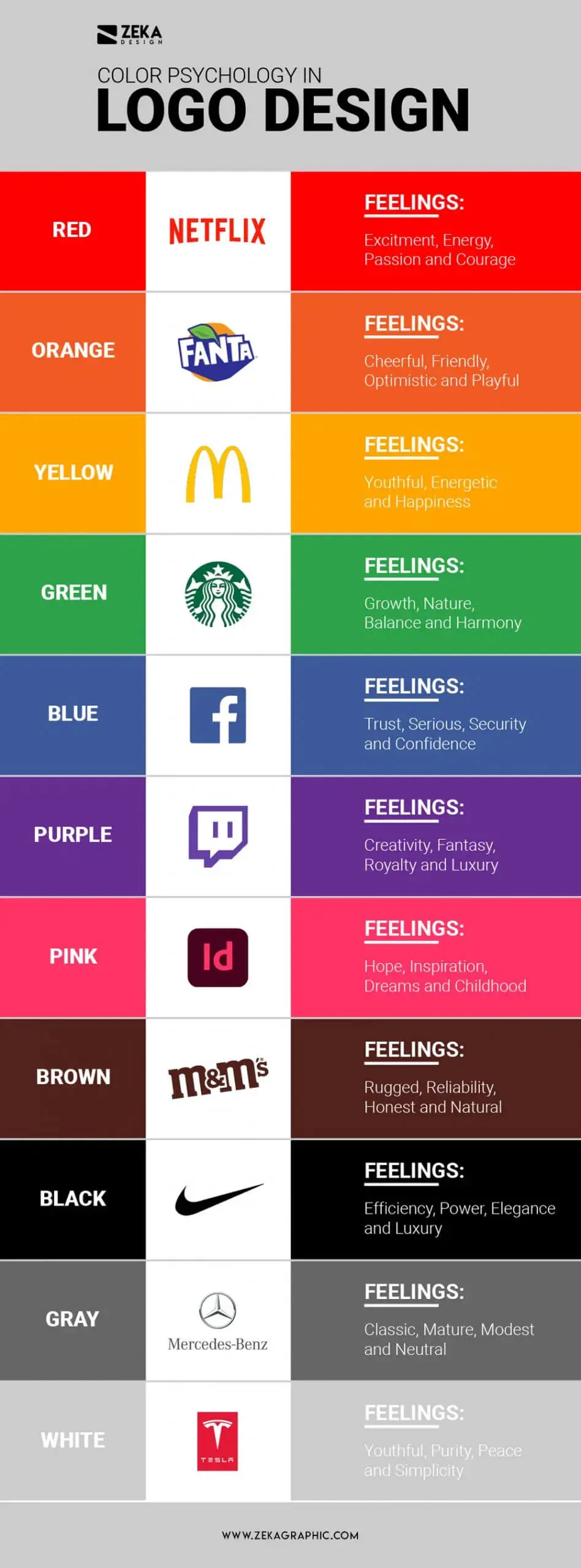
Similarly, a groovy font might work for a clothing line, but classic fonts work best for a financial organisation. So, once you finalise the initial design, fine-tuning it with the brand’s representatives ensures that the logo serves its purpose.
Types Of Logos
There are innumerable options at your disposal regarding logo design principles. So, let’s discuss some popular logo choices that have remained timeless.
1. Brand Mark
A brandmark is a visual representation of what the company stands for, such as the logo of a vegetable for an organic farming business. Initially, the brand mark will appear alongside the organisation’s name until people learn to associate the business with the logo.
With time, using only the logo will be enough to attract consumers.
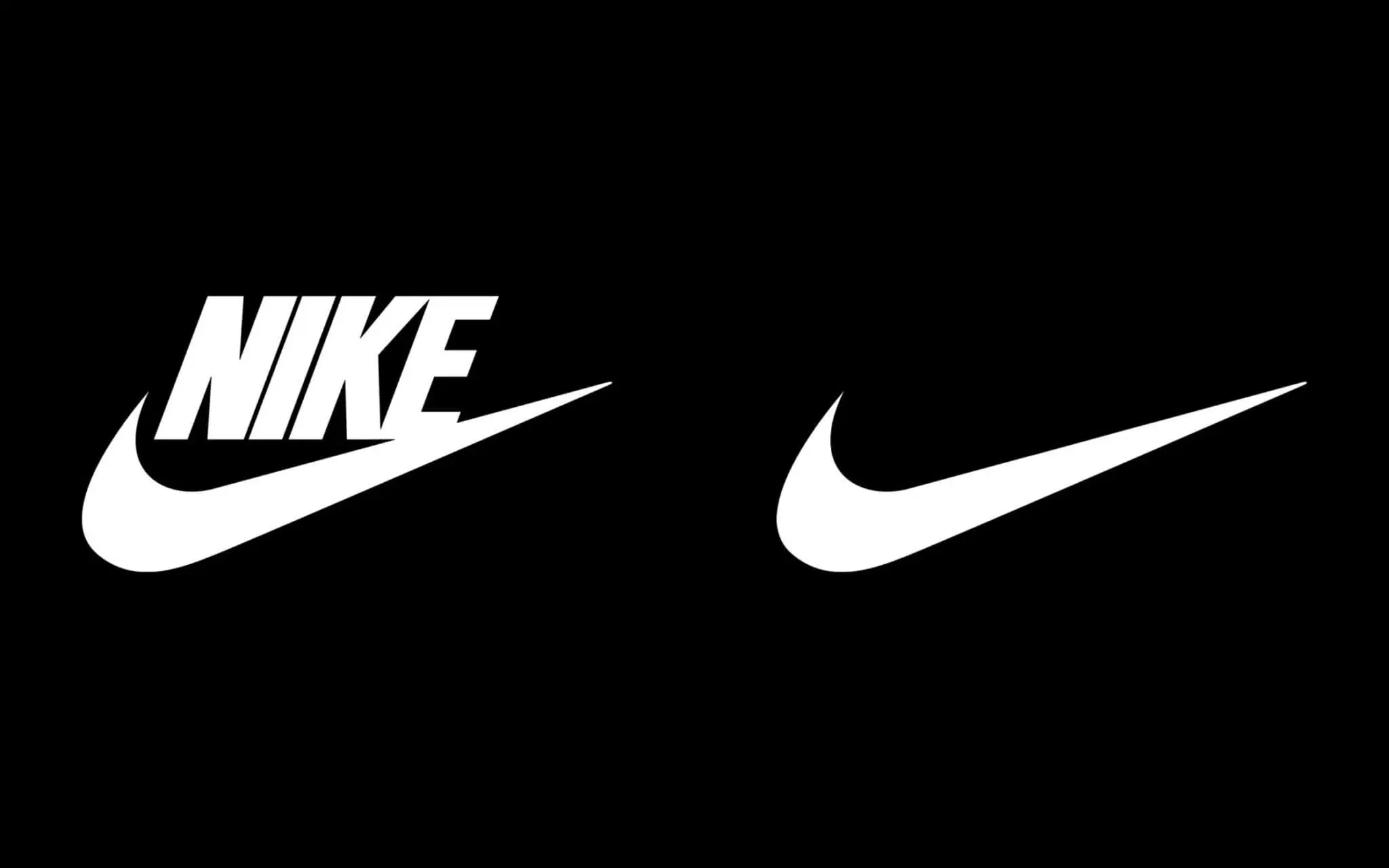
2. Abstract Logos
Usually, abstract logos are difficult to understand, meaning people may not find geometric shapes and patterns appealing. However, they possess a uniqueness that, if refined, will help promote brand value, allowing the organisation to connect with more people.
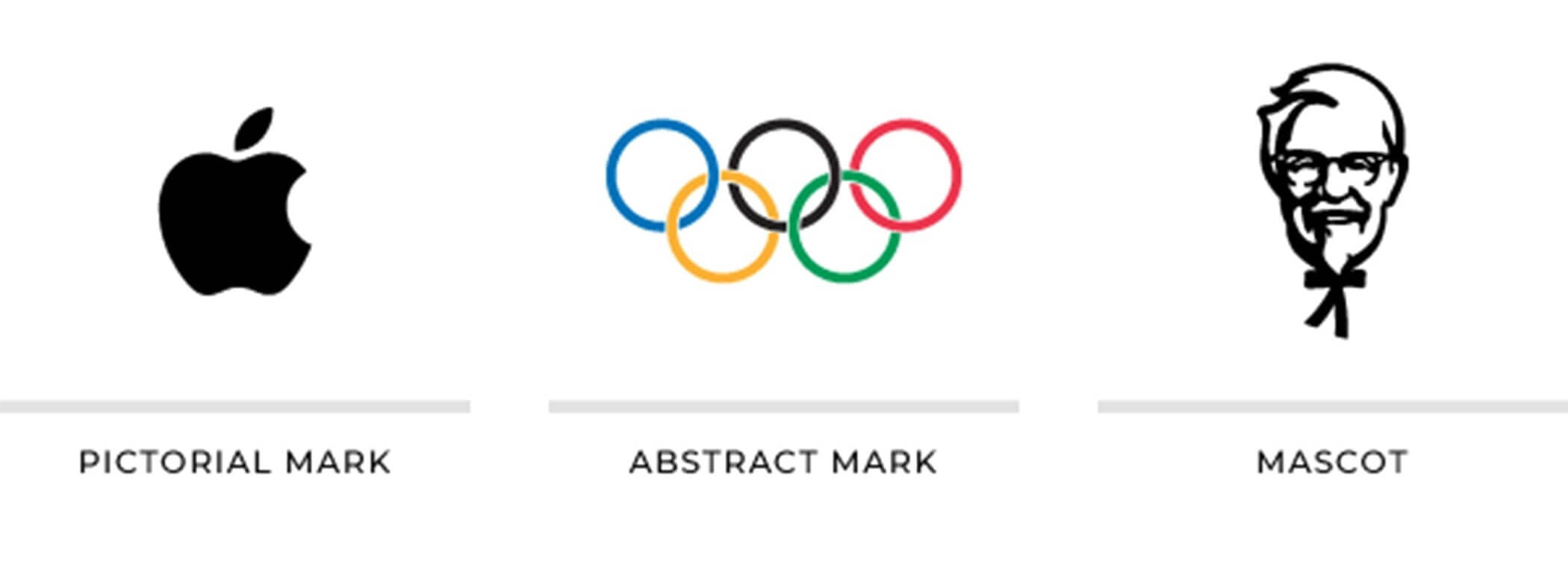
3. Emblems
Emblems are signs of pride and prestige, appearing selectively. People already identify with the history and tradition behind such logos, so the designing team need not do much.
All the colours and patterns hold significant meaning, so it would be best to keep the original logo design intact even if the brand wants to reinvent itself. Hence, please don’t make too many changes as it might rub people incorrectly. Instead, add to the logo’s glamour, making it relatable for a contemporary audience.
4. Combination Logos
Combination logos incorporate the best of two logo designs: symbols and wordmarks. The former includes a shape or style that best represents the organisation’s values, while the latter is the brand name.
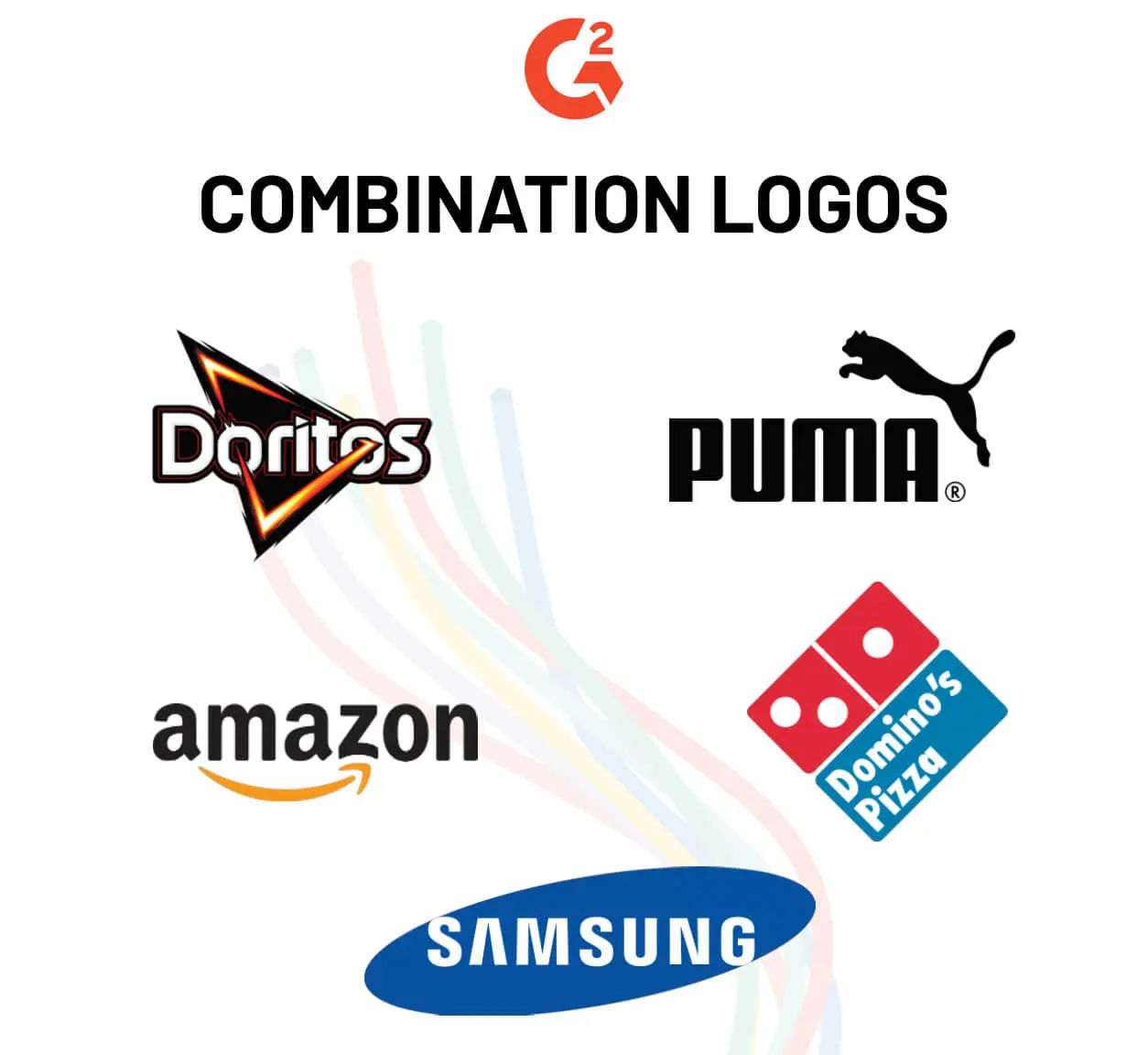
Combining the symbol with the name helps communicate the services on offer, making it easier to recognise the brand. For example, a law firm named “LAWYERS” can replace the “Y” with the image of a tie so that people realise that the firm is serious about its profession.
Moreover, it adds to the image that the organisation is well-versed in legal proceedings.
That’s All There Is To Know About Logos!
That brings us to the end of our guide about designing logos; hopefully, you can sketch something that will capture the audience’s imagination.
We’ll leave you with this tip: don’t try too hard, and enjoy the process. Keep working at it every day to get the creative juices flowing, and you might even surprise yourself with some ideas.
Whether a startup or an established business, having a suitable logo is one of your company’s most critical decisions. A compelling logo can differentiate success and failure for many organisations. But how do you know which type of logo to choose?
Let’s take a closer look at some key considerations when designing logos so that you get it right on the first try!
